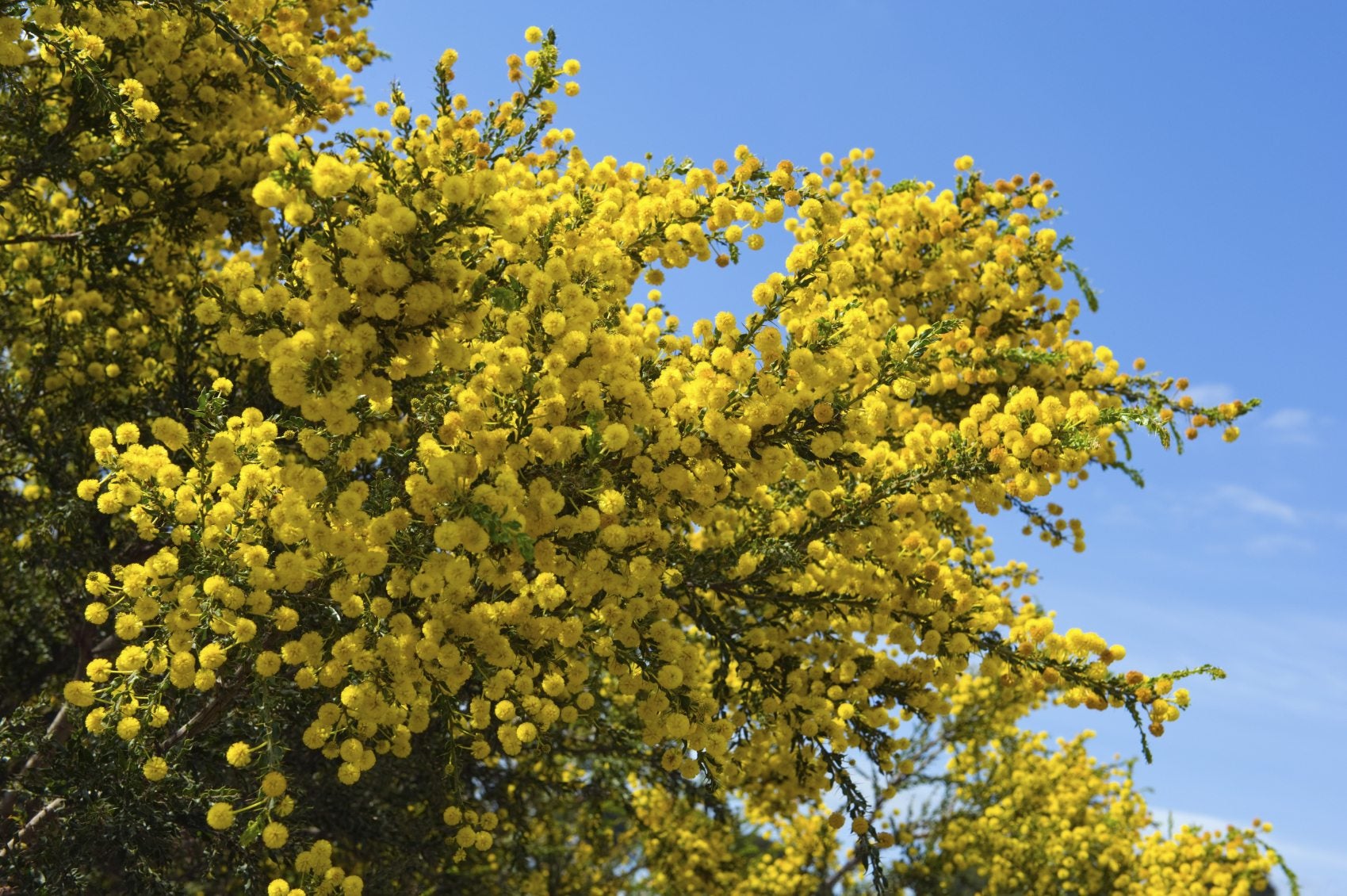Acacia Tree Care: Information About Acacia Tree Types


Acacias are graceful trees that grow in warm climates such as Hawaii, Mexico, and the southwestern United States. The foliage is typically bright green or bluish green and the small blooms may be creamy white, pale yellow, or bright yellow. Acacia may be evergreen or deciduous.
Acacia Tree Facts
Most acacia tree types are fast growers, but they usually live only 20 to 30 years. Many varieties are valued for their long roots which help stabilize the soil in areas threatened by erosion. The sturdy roots reach deep for underground water, which explains why the tree tolerates extreme drought conditions. Many types of acacia are protected by long, sharp thorns and an extremely unpleasant flavor that discourages animals from eating the leaves and bark.
Acacia Tree and Ants
Interestingly, stinging ants and acacia trees have a mutually beneficial relationship. Ants create cozy living quarters by hollowing out the thorns, then survive by eating the sweet nectar produced by the tree. In turn, the ants protect the tree by stinging any animals that attempt to munch on the leaves.
Acacia Tree Growing Conditions
Acacia requires full sunlight and grows in nearly any type of soil, including sand, clay, or soil that is highly alkaline or acidic. Although acacia prefers well-drained soil, it tolerates muddy soil for short periods of time.
Acacia Tree Care
Acacia is basically a plant-it-and-forget-it type of tree, although a young tree may need protection from wildlife while it develops its defense system. During the first year, the tree benefits from an orchid fertilizer every three to four weeks. After that time, you can feed the tree a general purpose fertilizer once every year, but it isn't an absolute requirement.
Acacia requires little or no water. Acacia may need occasional pruning during the dry months. Avoid pruning leafy, green areas and trim only dead growth. Although the tree is disease-resistant, it can sometimes be affected by a fungal disease known as anthracnose. Additionally, watch for pests such as aphids, thrips, mites, and scale.
Acacia Tree Types
Acacia trees preferred by most gardeners are varieties that burst out with yellow blooms in the winter or early spring. Popular types include:
Sign up for the Gardening Know How newsletter today and receive a free copy of our e-book "How to Grow Delicious Tomatoes".
- Bailey acacia, a hardy Australian variety that reaches heights of 20 to 30 feet (6-9 m.). Bailey acacia displays feathery, bluish gray foliage and bright yellow wintertime blooms.
- Also known as Texas acacia, Guajillo is an extremely heat-tolerant tree that hales from southern Texas and Mexico. It is a shrubby plant that reaches heights of 5 to 12 feet (1-4 m.). This species produces clusters of fragrant white flowers in early spring.
- Knifeleaf acacia is named for its silvery gray, knife-shaped leaves. Mature height for this tree is 10 to 15 feet (3-4 m.). Sweet smelling yellow flowers appear in early spring.
- Koa is a fast-growing acacia native to Hawaii. This tree, which eventually reaches heights and widths of up to 60 feet (18 m.), displays pale yellow blooms in spring.

A Credentialed Garden Writer, Mary H. Dyer was with Gardening Know How in the very beginning, publishing articles as early as 2007.